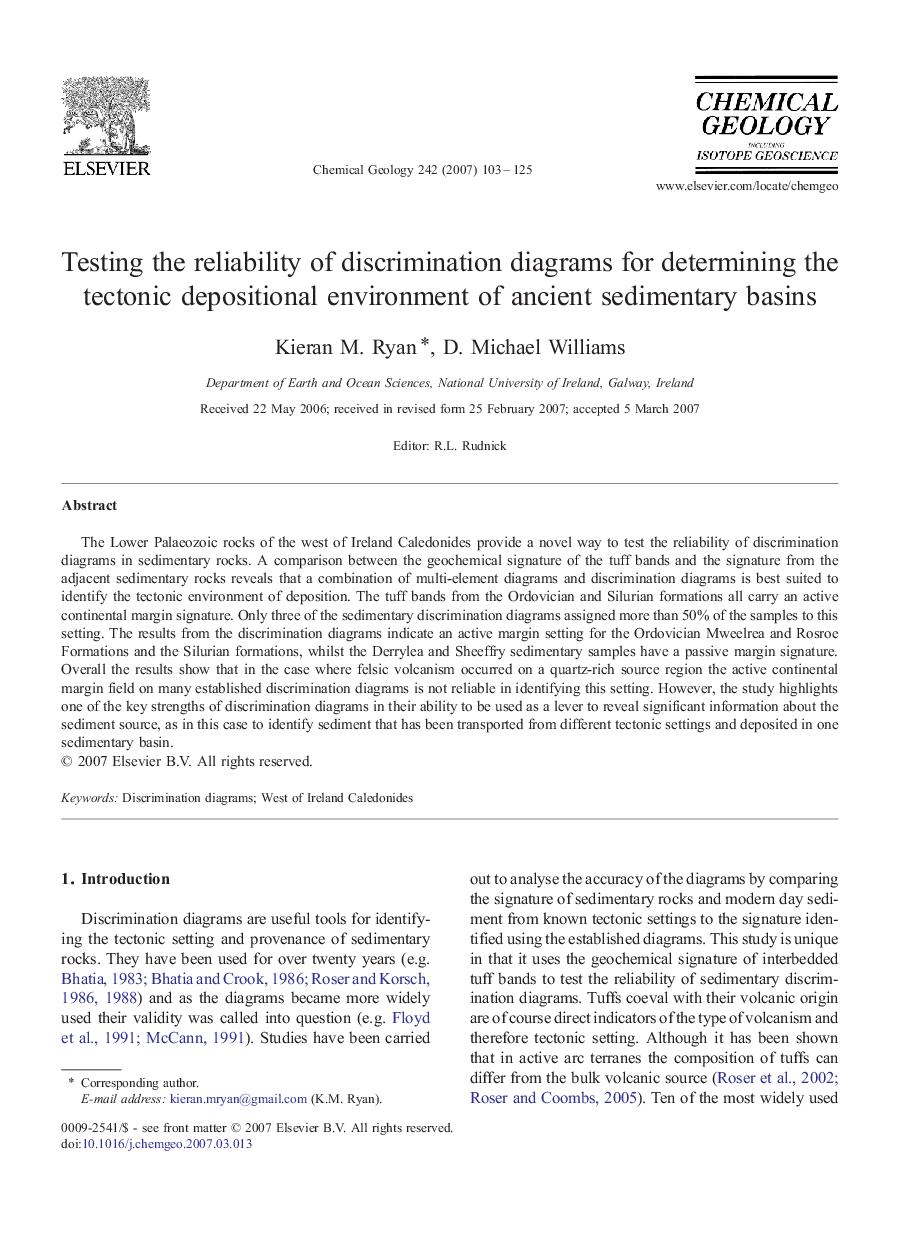| Article ID | Journal | Published Year | Pages | File Type |
|---|---|---|---|---|
| 4701180 | Chemical Geology | 2007 | 23 Pages |
The Lower Palaeozoic rocks of the west of Ireland Caledonides provide a novel way to test the reliability of discrimination diagrams in sedimentary rocks. A comparison between the geochemical signature of the tuff bands and the signature from the adjacent sedimentary rocks reveals that a combination of multi-element diagrams and discrimination diagrams is best suited to identify the tectonic environment of deposition. The tuff bands from the Ordovician and Silurian formations all carry an active continental margin signature. Only three of the sedimentary discrimination diagrams assigned more than 50% of the samples to this setting. The results from the discrimination diagrams indicate an active margin setting for the Ordovician Mweelrea and Rosroe Formations and the Silurian formations, whilst the Derrylea and Sheeffry sedimentary samples have a passive margin signature. Overall the results show that in the case where felsic volcanism occurred on a quartz-rich source region the active continental margin field on many established discrimination diagrams is not reliable in identifying this setting. However, the study highlights one of the key strengths of discrimination diagrams in their ability to be used as a lever to reveal significant information about the sediment source, as in this case to identify sediment that has been transported from different tectonic settings and deposited in one sedimentary basin.
